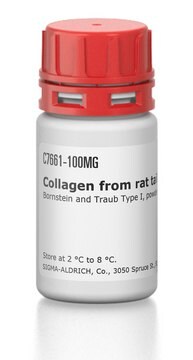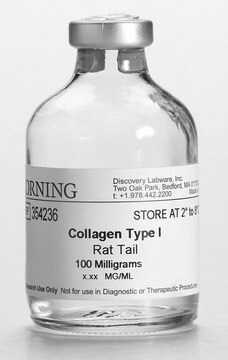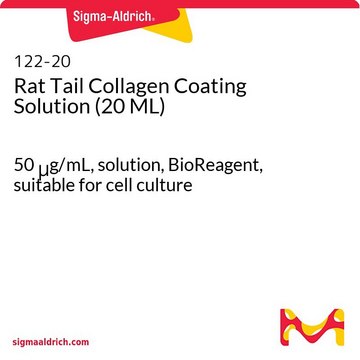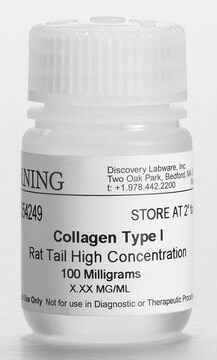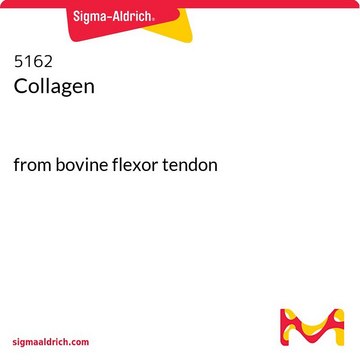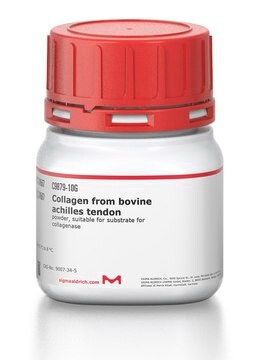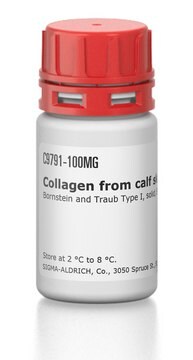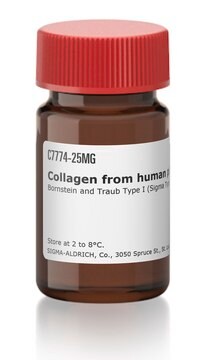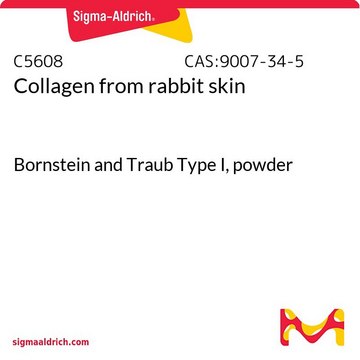推薦產品
生物源
rat tail
品質等級
無菌
sterile
形狀
lyophilized (clear, colorless solution after reconstitution)
包裝
pkg of 30 mg
製造商/商標名
Roche
技術
cell culture | mammalian: suitable
UniProt登錄號
儲存溫度
2-8°C
基因資訊
rat ... Col1a1(29393)
相關類別
一般說明
特異性
應用
生化/生理作用
特點和優勢
冻干粉,细胞培养级,3瓶10mg
規格
準備報告
5 μg/cm2用于细胞培养涂层;对于胶原蛋白凝胶制备,终浓度要达到2到3 mg/ml。
重構
当用于制备胶原蛋白凝胶,瓶子里的药品需要溶解在一个3.3ml无菌0.2%醋酸(V/V)体系中。最终的终浓度为3 mg/ml。
作为培养皿涂层,终浓度应该在1到2mg/ml。
注意:溶解:不要搅动,只需要将醋酸倒在干粉上,让它静置几小时,直到全部溶解。为了完全溶解,可能需要15到25℃培养,最多24小时。
胶原蛋白重构应该在15到25℃之间,更高的温度会破坏纤维,可能阻止后续胶原蛋白凝胶化。
其他說明
儲存類別代碼
11 - Combustible Solids
水污染物質分類(WGK)
WGK 1
閃點(°F)
does not flash
閃點(°C)
does not flash
分析證明 (COA)
輸入產品批次/批號來搜索 分析證明 (COA)。在產品’s標籤上找到批次和批號,寫有 ‘Lot’或‘Batch’.。
客戶也查看了
文章
The extracellular matrix (ECM) is secreted by cells and surrounds them in tissues.
3D cell culture overview. Learn about 2D vs 3D cell culture, advantages of 3D cell culture, and techniques available to develop 3D cell models
Extracellular matrix proteins such as laminin, collagen, and fibronectin can be used as cell attachment substrates in cell culture.
Extracellular matrix proteins such as laminin, collagen, and fibronectin can be used as cell attachment substrates in cell culture.
我們的科學家團隊在所有研究領域都有豐富的經驗,包括生命科學、材料科學、化學合成、色譜、分析等.
聯絡技術服務

